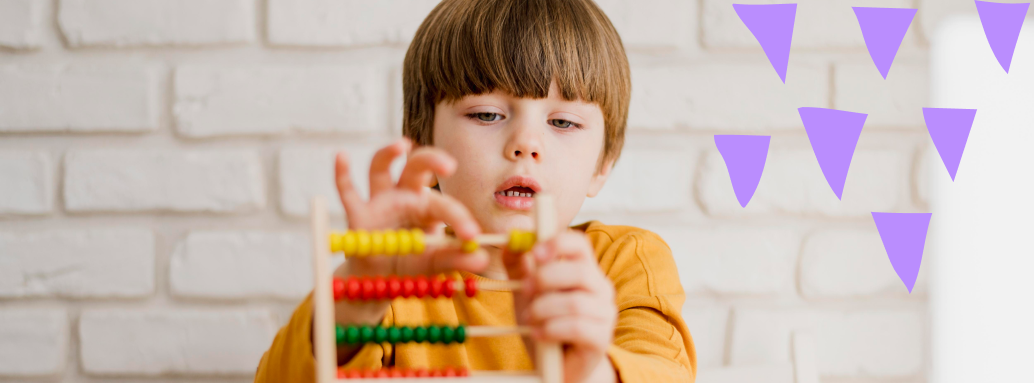A child-centered guide for educators and child care teams
Lesson planning in early childhood is not about ticking boxes, it’s about nurturing the whole child. It’s about creating experiences that support development across multiple domains, while respecting each child’s unique pace, interests, and emotional needs.
We believe that the best early childhood education comes from intentional, flexible planning grounded in relationship, curiosity, and reflection. This guide is here to help educators and administrators plan and document learning in ways that are developmentally appropriate, emotionally responsive, and aligned with best practices in early years education.
Whether you're building a classroom curriculum, designing daily invitations to play, or communicating learning with families, we’re here to support the journey.
Why Planning in Early Childhood Looks Different
Planning for preschoolers isn’t about strict objectives or rigid outcomes. It’s about possibility, creating environments where children can explore, wonder, and connect at their own pace and on their own.
Young children learn best through:
- Hands-on experiences
- Play-based inquiry
- Repetition and routine
- Emotional connection
- Real-world relevance
That means your curriculum should prioritize flexibility, observation, and responsiveness, rather than over-scheduling or overly academic structures.
Principles of Purposeful Planning in Early Years
Let’s break down the pillars of strong, responsive planning:
1. Child-Led, Adult-Guided
Great planning starts with observation. Watch what sparks curiosity, what challenges a child, what they return to over and over. From there, educators can gently guide the next steps by offering materials, language, or provocations that deepen the experience.
Example:
If a group of children is fascinated by shadows, instead of moving on to the next theme, you might offer flashlights, translucent materials, or a shadow puppet area.
2. Integrated Development
Early years learning is not siloed. One provocation can support multiple domains: communication, physical development, emotional regulation, early math, and more.
Example:
A simple cooking activity can support measurement (math), language development, motor skills, and social-emotional skills like taking turns.
3. Emotionally Attuned
Planning should always consider a child's emotional state. Is a child feeling safe? Connected? Regulated? Only then can deep learning happen.
A trauma-informed lens reminds us: behavior is communication, and plans must be adaptable to what a child needs that day.
Creating a Responsive Curriculum for Preschoolers
A strong early childhood curriculum balances structure with flexibility, intentionality with responsiveness. It provides a broad framework for learning, while leaving space for child-driven exploration.
Here’s how to build one:
1. Start with Broad Learning Goals
Instead of rigid academic standards, early years learning goals should focus on:
- Social-emotional development
- Communication and language
- Physical development
- Early literacy and numeracy (through play)
- Curiosity and understanding of the world
- Creativity and expression
Your curriculum should offer multiple pathways to explore each domain, recognizing that not all children arrive at milestones in the same way or time.
2. Plan with Seasons and Cycles in Mind
Children respond well to rhythm and repetition. Planning in monthly or seasonal cycles helps you stay grounded while adapting to the classroom's evolving needs.
Example Themes:
- Autumn → Exploring change, nature walks, harvesting
- Winter → Light and dark, cozy stories, emotions
- Spring → Growth, planting, baby animals
- Summer → Water, movement, transitions
Remember: themes are a guide, not a mandate. Let children's curiosity shape the depth and direction.
3. Build a Weekly Rhythm (Not a Script)
A weekly rhythm offers structure without rigidity. Here’s a sample flow:
- Monday: Outdoor discovery
- Tuesday: Sensory exploration
- Wednesday: Story-based provocations
- Thursday: Music and movement
- Friday: Reflection and celebration
Within each day, offer open-ended provocations, responsive circle time discussions, and meaningful moments for connection.
4. Plan for the Individual and the Group
Use your observations to identify:
- What the group is collectively interested in
- What individual children are currently exploring or struggling with
Then balance group offerings with personalized support:
- Set up small group provocations or individualized learning invitations
- Offer visual supports or alternative materials based on specific needs
- Differentiate based on language exposure, sensory needs, or temperament
5. Involve the Children in the Planning
Empower children by making planning visible and inclusive:
- Use a “Planning Wall” with photos of past projects and questions like “What do you want to explore next?”
- Include their voices in reflection: “What did we love about the farm visit?”
- Let them revisit favorite activities to deepen learning
This kind of democratic planning boosts confidence, autonomy, and critical thinking.
Planning Doesn’t End with the Setup and it Begins with Observation
Responsive planning is rooted in what we see children doing, saying, and feeling in the moment.
Observation Questions to Ask:
- What choices are children making?
- What materials are they returning to?
- What language are they using?
- Who are they connecting with?
- What brings joy, frustration, or focus?
These observations then shape the next day’s setup, creating a cycle of planning, observing, reflecting, and adapting.
Using Parent App to Support Early Years Planning and Documentation
Planning is only one part of the equation, documenting, reflecting, and communicating learning are equally important. That’s where the Parent App shines.
With Parent App, educators can:
- Create customized learning journeys for each child
- Track progress across multiple developmental domains
- Upload photos, notes, and learning moments in real time
- Send meaningful updates to families with context and care
- Store and share child portfolios to celebrate growth
- Collaborate with teams for planning and reflection sessions
When documentation is simple and intuitive, educators spend less time on screens and more time on the floor, in relationship with children.
Tips for Making Lesson Planning Joyful and Sustainable
Planning shouldn’t feel like a burden. Here’s how to make it work for you, not against you:
Use Templates
Have a flexible weekly or monthly template that you revisit. Parent App allows you to create and reuse formats to make planning faster and easier.
Collaborate as a Team
Plan together when possible. Share observations, divide theme work, and reflect on what’s working and what needs adjusting.
Start Small
Not every setup needs to be Pinterest-perfect. Sometimes a tray of leaves and a few magnifying glasses are all you need for rich learning.
Build in Reflection Time
Make time each week to reflect: What went well? What did children love? What surprised you? Use this to inform next week’s plan.
Keep Child Voice at the Center
Let go of the need to “cover content” and focus on creating meaning through authentic experiences.
Curriculum in the Early Years Should Feel Like an Invitation, Not a Checklist
When we prioritize connection over completion, we create learning that lasts. The early years are a time of rapid brain growth but also of deep emotional wiring. The way children feel in your classroom will shape how they view themselves as learners for years to come.
By approaching planning with flexibility, responsiveness, and heart, we ensure that learning is not only effective, it's joyful, safe, and meaningful.
Final Thoughts: Planning With the Whole Child in Mind
You don’t need to have every detail figured out. What you need is:
- Curiosity about your children
- A clear rhythm that supports your day
- A willingness to observe and adapt
- Tools (like Parent App) that support, not overwhelm
Remember: you are doing the deeply human work of shaping lives. And with the right support, planning can feel less like a task and more like an invitation to wonder, alongside your children.
Billing, Invoicing Automation & Smart Finances
Communication & Engagement
Child Development & Progress
Waitlist, Forms & Attendance
Effortless Team Management
Daily Updates That Matter
Templates & Printables
Blogs
Webinars
Case Studies & Testimonials
FAQs
Help Center



